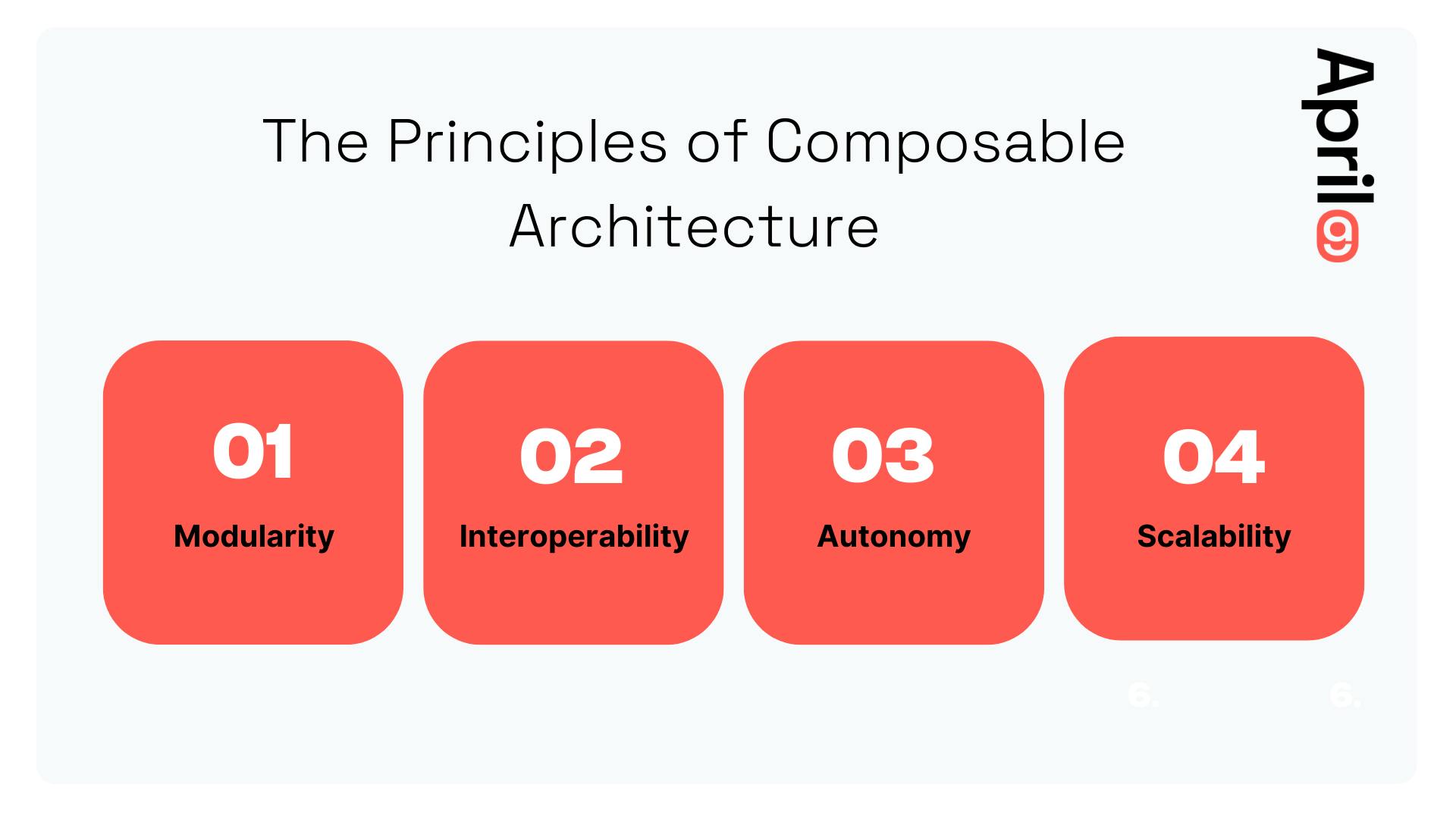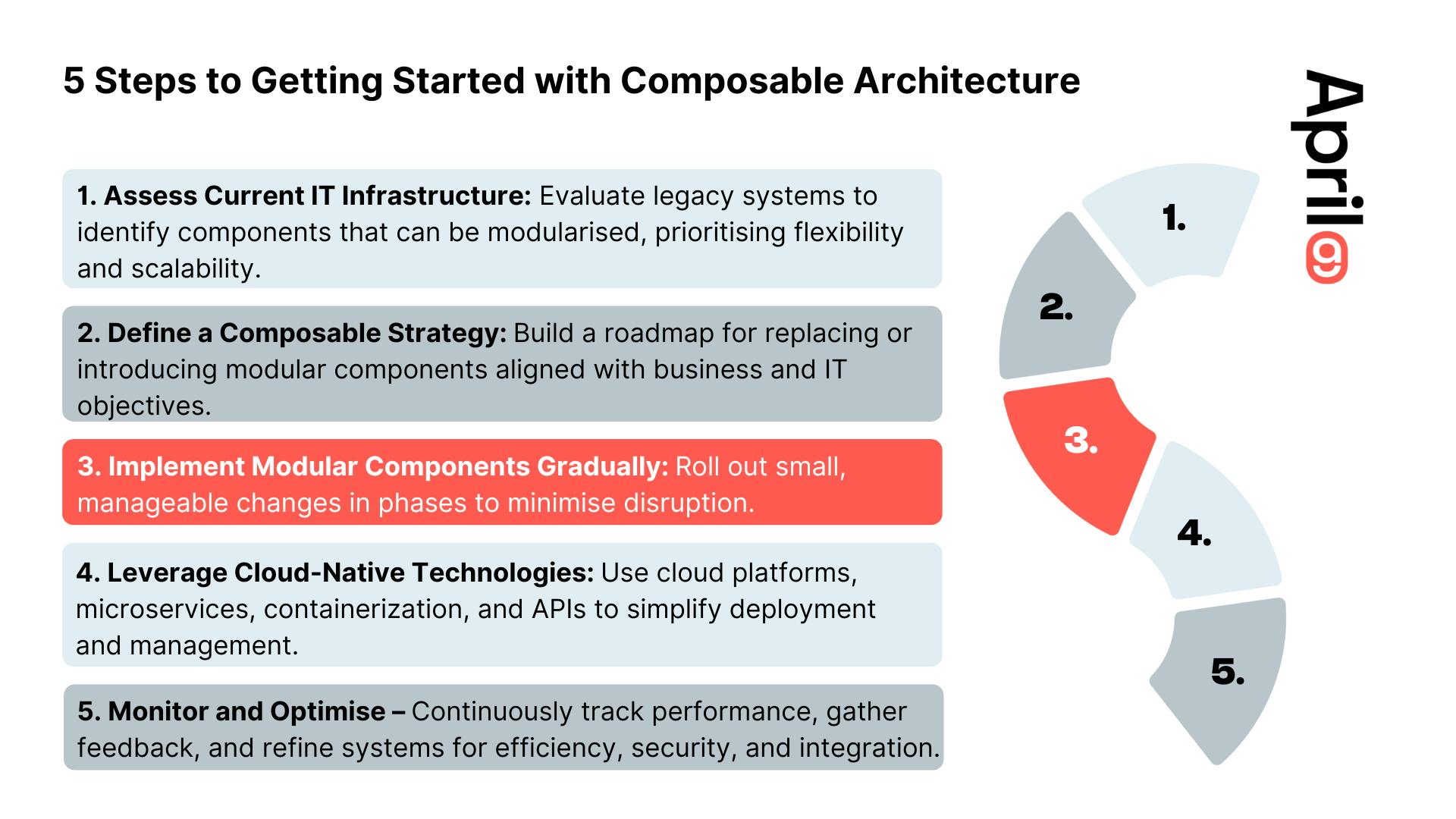Traditional monolithic IT systems are proving to be a major bottleneck for modern IT teams. Organisations that rely on rigid, outdated infrastructure struggle with scalability, adaptability, and integration challenges. Plus, such systems are costly to maintain, with the average business spending up to USD 3 million per year.
Enter composable architecture—a modern approach that offers unprecedented flexibility, allowing enterprises to build IT systems that evolve seamlessly with their needs. It enables developers to quickly assemble components to create complex applications for different user cases.
In this post, we explore the concept of composable architecture, its benefits, and why it is the secret weapon for building flexible IT systems.
What is Composable Architecture?
Composable architecture is an IT framework that emphasises modularity, flexibility, and interoperability. Instead of relying on a single, monolithic system, the framework breaks IT infrastructure into interchangeable components that can be independently deployed, upgraded, or replaced. These components, often called microservices or building blocks, communicate via APIs, ensuring seamless integration across systems.
At its core, composable architecture enables organisations to mix and match different elements to create a tailored IT environment. This approach aligns with the principles of composability, where individual modules can be arranged in various configurations to achieve specific business outcomes.
Related reading: The April9 Journey: From Bespoke to Composable Solutions
The Principles of Composable Architecture

Now, let’s take a closer look at the key characteristics of composable architecture:
1. Modularity
A composable system is built from distinct, reusable components. Each module serves a specific function and can operate independently while integrating smoothly with other parts of the system. It can be upgraded or replaced without affecting the entire system.
2. Interoperability
Interoperability ensures that all components within a composable architecture can communicate effectively. This is achieved through standardised APIs and integration protocols, allowing different services and applications to work together without friction.
3. Autonomy
Each module in a composable system operates independently, enabling businesses to update or replace components without disrupting the entire system. This autonomy minimises downtime and enhances business agility.
4. Scalability
Composable architecture allows businesses to scale individual components as needed rather than overhauling an entire system. This results in cost savings and improved efficiency, particularly for growing enterprises.
The Benefits of Composable Architecture
Here are the benefits that composable architecture offers to organisations and businesses:
1. Greater Business Agility
One of the most significant advantages of composable architecture is its ability to support rapid change. Businesses can introduce new features, integrate emerging technologies, or pivot their strategies without extensive rework. This agility is particularly valuable in today’s fast-paced digital economy, where staying ahead of competitors requires continuous innovation.
2. Faster Time-to-Market
Traditional monolithic IT systems require lengthy development cycles, often delaying product launches and updates. Composable architecture enables businesses to roll out new services and features faster by leveraging pre-built modules that can be assembled and deployed with minimal effort.
3. Cost Efficiency
Maintaining and upgrading monolithic IT systems is expensive and time-consuming. Composable architecture reduces costs by allowing organisations to invest only in the components they need. Moreover, its modular nature eliminates the need for costly system-wide updates.
Success story: easyauto123 Sales Process Transformation and 20% Operational Cost Deduction in Less Than a Year
4. Improved Resilience and Reliability
A failure in a monolithic system can lead to widespread disruptions, impacting business operations. Composable architecture mitigates this risk by isolating failures to individual components, ensuring the rest of the system remains operational. This enhances overall system resilience and minimises downtime.
5. Seamless Integration with Emerging Technologies
Businesses looking to integrate artificial intelligence (AI), machine learning (ML), blockchain, or the Internet of Things (IoT) often face compatibility issues with legacy systems. Composable architecture simplifies this process by enabling plug-and-play integration with modern technologies, future-proofing IT systems.
Real-world Implementation of Composable Architecture
Composable architecture boasts different use cases and applications, including:
1. Government and Public Services
Government departments and institutions undergoing digital transformation benefit immensely from composable architecture. Adopting a modular approach allows them to modernise their IT infrastructure incrementally, reducing risks associated with large-scale system overhauls and improving public services.
2. E-commerce and Retail
Composable architecture is widely used in e-commerce platforms to enhance customer experiences. Retailers can quickly integrate new payment gateways, personalised recommendation engines, or omnichannel capabilities without disrupting their existing systems.
3. Healthcare and Telemedicine
In the healthcare sector, composable architecture enables seamless integration between patient records, telemedicine platforms, and diagnostic tools. This ensures efficient data exchange while maintaining compliance with healthcare regulations.
4. Financial and Insurance Services
Banks and financial institutions leverage composable architecture to improve their service offerings. Whether integrating fintech solutions, fraud detection systems, or automated trading platforms, modular IT frameworks enable financial and insurance organisations to stay agile and competitive.
5. Software-as-a-Service (SaaS) Platforms
SaaS providers rely on composable architecture to offer flexible, customisable solutions. This allows customers to select and integrate only the functionalities they require, leading to a more personalised software experience.
Challenges and Considerations
While composable architecture offers numerous benefits, it is not without its challenges. Organisations must carefully plan their transition to a modular framework to avoid common pitfalls.
1. Complexity in Management
Managing a composable system requires robust governance frameworks. Without proper oversight, an organisation can end up with an overly complex IT environment that is difficult to maintain.
2. Security Concerns
With multiple interconnected components, security vulnerabilities may arise — a breach in one component can impact the entire network. Businesses must implement stringent access controls, encryption protocols, and API security measures to protect sensitive data.
3. Integration Challenges
Ensuring seamless interoperability between different modules can be challenging. Organisations must standardise APIs and use middleware solutions to streamline integration efforts.
4. Skill and Expertise Requirements
Shifting to composable architecture requires skilled IT professionals who understand modular systems, API management, and cloud-native development. Businesses may need to invest in training or hire external expertise.
5 Steps to Getting Started with Composable Architecture

Transitioning to composable architecture does not happen overnight. Businesses must take a strategic approach to ensure a smooth implementation.
- Assess current IT infrastructure – Evaluate your existing IT systems to identify components that can be modularised. Prioritise areas where flexibility and scalability are most needed.
- Define a composable strategy – Develop a roadmap outlining which components will be replaced or introduced. Ensure alignment with business objectives and IT capabilities.
- Implement modular components gradually – Start with small, manageable changes before scaling up. Introduce modular components in phases to minimise disruption and ensure a successful transition.
- Leverage cloud-native technologies – Cloud platforms offer extensive support for composable architectures. Utilising cloud-based microservices, containerisation, and API gateways can simplify deployment and management.
- Monitor and optimise – Continuously monitor system performance and gather feedback. Make necessary optimisations to enhance efficiency, security, and integration capabilities.
For effective implementation of composable architecture, it’s crucial to work with a service like April9 that understands every process and delivers cutting-edge technology to ensure rapid development and deployment.
Related reading: The April9 Journey: From Bespoke to Composable Solutions
Build Flexible IT Systems with April9’s Composable Solutions
Composable architecture is revolutionising the way businesses approach IT systems. Embracing modularity, interoperability, and scalability enables organisations to build flexible, future-proof IT infrastructures that support rapid innovation and growth.
While challenges exist, a well-planned transition can unlock immense benefits, positioning businesses for long-term success in an ever-evolving digital landscape. As enterprises strive to stay competitive, adopting composable architecture could be the key to unlocking their full potential.
At April9, we offer composable solutions to simplify app development for IT teams, thanks to our composable software Stack9. Our platform supports integrated functions, rapid development, customisation, and scalability. It allows teams to configure up to 80% of their requirements through low-code approaches and customise the remaining 20%.
Contact April9 today to learn how our composable software can support your business.
Further reading: How April9 Can Help Your Business









